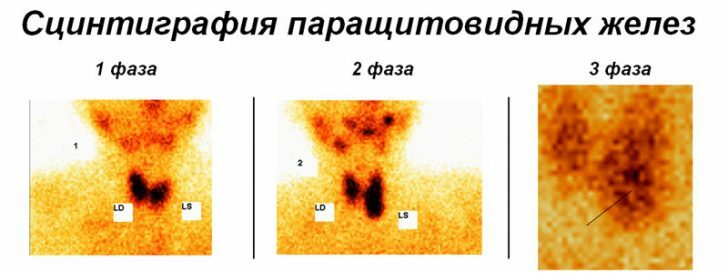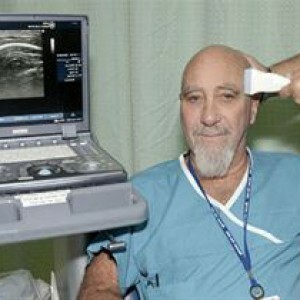Why there is a headache in the frontal and parietal parts of the head?
Contents:
- Causes of headache in the parietal part of the
- Migraine
- Psychogenic factors
- Chronic diseases
- Intracranial pressure
- Cluster pains
- Inflammatory diseases
- How to solve the problem with a headache in the forehead?
 Headache in the frontal part of the head periodically disturbs adults and children, and manifests itself in different ways. Pulsation, heaviness can be replaced by dull, aching pain, calmed down for a while, covered with a wave, irradiated to the nape of the neck, temples. The condition is often accompanied by:
Headache in the frontal part of the head periodically disturbs adults and children, and manifests itself in different ways. Pulsation, heaviness can be replaced by dull, aching pain, calmed down for a while, covered with a wave, irradiated to the nape of the neck, temples. The condition is often accompanied by:
- intolerance to light;
- sharp sounds;
- by dizziness;
- slight nausea.
Usually it is written off for stress, overfatigue, limited to taking Citramon, cold compresses, if the pathology is explainable for episodic manifestations. In case of chronic discomfort, it is necessary to establish provoking factors.
Causes of headache in the parietal part of
Syndrome may be the only complaint with 40 diseases: depression, neurosis, endocrine, kidney disorders, ENT diseases. Most often occurs with migraine( 27%), psychological stress( 68%).
Migraine
Chronic disease with episodic attacks makes itself felt pulsating, spasmodic pains in the orbital-frontal parietal area. Paroxysmal syndrome is accompanied by nausea, unhealthy reaction to light and noise, drowsiness, lethargy. Before exacerbation sometimes there are original sensations:
- ripples, light flashes;
- distorted perception of reality;
- tension in the abdomen.
Migraines start suddenly, lasting from a few hours to several days. A cephalgic attack can be tolerated before the onset of aggressive pain by analgesics, spasmolytics. With the development of a pathological condition, painkillers are ineffective.
Psychogenic factors
Headache in the region of the top of the moderate intensity is formed on an emotional background, often radiating to the nape. The stress state occurs in humans:
- with high anxiety;
- suspiciousness;
- is a latent or obvious depression caused by chronic fatigue.
Important! Characteristic symptoms like nausea, dizziness are practically absent. Sometimes there is a reaction to light, the appetite decreases.
Chronic diseases
Acute headache in the parietal part of the head occurs with :
- hypotension and high blood pressure;
- atherosclerosis of vessels;
- admission of pharmacological drugs;
- infectious diseases;
- hormonal changes;
- after exposure to the sun;
- long sitting at the computer.
Serious disorders appear after traumatic brain injuries( concussion).There is a memory disorder, dryness appears in the mouth, there are problems with vision.
Intracranial pressure
 Often causes headaches at the top of the head . The discomfort is accompanied by decreased vision, dizziness, apathy, drowsiness, fluctuations in blood pressure. Occurs in the morning, localized in the forehead region, rapidly spreads across the entire skull of the . Anesthetics are ineffective. Structural damage to the brain tissue requires specific treatment.
Often causes headaches at the top of the head . The discomfort is accompanied by decreased vision, dizziness, apathy, drowsiness, fluctuations in blood pressure. Occurs in the morning, localized in the forehead region, rapidly spreads across the entire skull of the . Anesthetics are ineffective. Structural damage to the brain tissue requires specific treatment.
Cluster pains
Appear for no apparent reason in the eye area at approximately the same time and last from a few minutes to 3 hours. Concomitant symptoms - eyelid swelling, sensitivity to noise, vomiting, dizziness, progression with motion. It is more common for middle-aged men, ladies in menopause. Symptoms often change. Sensation can weaken or intensify. Due to the characteristic signs, the disease is quickly diagnosed.
Inflammatory diseases
- Sinusitis. The disease is always accompanied by a headache in the area of the crown, forehead. Symptoms - nasal breathing, discharge, nasal voice, photophobia. Inflammation of the maxillary sinuses provokes pathology of a different nature. With complication, the pulsating sensations shift to the area of the cheekbones, surround the forehead, cover the temples.
- Infectious neuritis affects the branches of the trigeminal nerve, resulting in edema of deep tissues, compressing the nerve endings. The first signs appear later in the evening, then the destructive state is transformed into severe pain. Facilitate the condition of decongestants, antibiotics
- Frontite. Inflammatory disease of the mucosa of the frontal sinus located between the eye socket and the frontal cranial fossa, without appropriate treatment leads to rhinogenous and orbital complications. Symptoms: aching frequent headaches in the forehead area with localization in the superciliary, edema of the eyelids. The problem is solved with the help of decongestants and antibiotics.
How to solve the problem with a headache in the forehead?
To begin with, you need to organize the day mode. With a single episodic headaches in the forehead will help walk in the air, a full sleep. It is good to conduct a course of massage, acupuncture or manual therapy, myofascial releasing( massage by a special technique).If the measures taken do not work, the cause of headaches in the parietal part is revealed by the neurologist, then he appoints an adequate treatment.
write the question in the form below:



